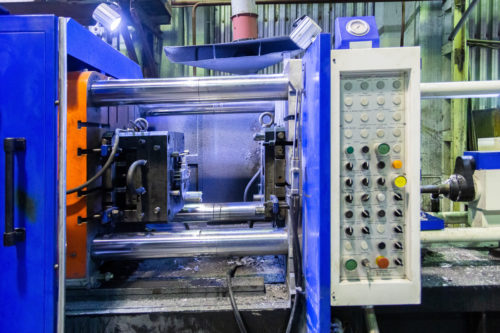Understanding Die Casting
Die casting is a manufacturing process in which metal alloys are liquified and injected into a reusable mold using extreme pressure. The finished piece is removed from the mold after cooling – sometimes requiring secondary processes. The process is fast, automatable, and able to produce high volumes of virtually identical components. This process is similar to injection mold in that it can create complex parts with specific geometries, however, die casting creates metal parts whereas injection molding creates plastic parts. Learn more about the different types of metal die casting, some of its most common applications, and how DyCast Specialties Corp. can help with your next project.
Types of Die Casting
Die casting is an efficient production method that produces high-quality, durable parts with considerable service life. There are several different types of die casting and it is important to know the differences when choosing a material and a casting method. The six most common types of die casting care:
Aluminum Die Casting
Aluminum is a versatile, cost-effective metal with a good strength-to-weight ratio. It also has a high melting point, meaning it needs a specialized process to accommodate it. Aluminum die casting uses cold chamber die casting, a process that specifically reduces the risk of corrosion by keeping the melting pot and the injector components separate.
The advantages of die casting with aluminum include:
- Quality: Aluminum is very formable and responds well to die casting processes. Manufacturers can create highly precise components that map accurately to the original design plan, even for parts with intricate geometries.
- Excellent product characteristics: The resulting parts are also durable, lightweight, and strong.
- Simplicity: Aluminum responds well to die casting, so it doesn’t need to undergo finishing or secondary processes.
Zinc Die Casting
Unlike aluminum, zinc die casting uses a hot-chamber process. In this form of die casting, the zinc is melted directly in the casting machine (rather than in a separate furnace) and then injected into the preformed mold. Zinc offers unique advantages for die-casted parts, including:
- Resistance to corrosion and general low-maintenance characteristics
- Excellent formability and castability, which makes it ideal for thin, intricate parts
- Sustainability because the metal is recyclable
- Excellent ability to conduct heat and electricity
Low-Pressure Die Casting
Unlike other processes that eject molten metal into molds at high pressures, this process works without feeders to create high-yield batches. This process is commonly used to create symmetric, circular aluminum parts, such as vehicle wheels.
Vacuum Die Casting
Vacuum die casting processes reduce turbulence and gas inclusions in the setting parts, which in turn results in strong, low-porosity components. Components that require heat-based finishing treatments are often vacuum cast.
Squeeze Die Casting
Metals with low fluidity are difficult materials to cast because they don’t efficiently fill the molds. Squeeze casting is ideal for these metals because once the mold is filled, it squeezes shut pushing the material into the deeper portions of the mold. Molten aluminum parts are often produced through squeeze die casting. The process results in products with stronger fibers and less fluidity.
Semi-Solid Die Casting
If you need parts with maximum possible density and virtually no porosity and turbulence, semi-solid die casting is the right choice. The metal is cut into smaller pieces and melted to a semi-solid state. Once in this state, a shot sleeve moves the material into the mold where it cures. It results in very precise components. Non-ferrous metals like aluminum and magnesium respond well to this process.
Die Casting Applications
Some of the most popular applications for die casting include parts for the following industries:
- Appliances: Die casting creates extremely precise components, which is ideal for small, compact configurations of moving parts.
- Automotive: Cars benefit from increasing light and durable metal parts that increase their fuel efficiency and performance.
- Electric Motors: EV motors often have aluminum parts because the metal is strong while still being lightweight.
- Hand Tools: Die cast parts are strong and durable without being brittle; they also have safe edges without relying on finishing and secondary processes to remove any burrs.
- Robotic Automation: Increasingly complex and flexible robots need precise, lightweight components that allow for complex motions.
- Security Components: Because die casting can work with a variety of metals, manufacturers can build everything from lightweight electronic security components to heavy-duty locks and tumblers.
Different applications and use cases often require different types of die casting and materials. For complex precision parts, for example, aluminum is often a good choice; for rugged tooling parts, heavy-duty carbon steels may be a better fit. Our design and engineering professionals can help you find the right process and materials for your die-cast design.
Die Casting at DyCast Specialties Corp.
Don’t let inferior die casting processes negatively impact your product quality or brand reputation. At DyCast, we specialize in full-service aluminum and zinc die casting projects. We prioritize complete customer satisfaction through excellent customer service, cost-effective services, expertise, and complete engineering support from start to finish. Contact us today to learn more about our capabilities or request a quote for pricing details.


Comments are closed